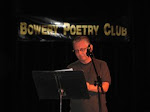I've reupped this 27-song collection by special request, here.
[Originally posted in November 2012.] GARY'S NOTE: For months now, a fellow traveler currently in Seoul, South Korea, calling himself "Male Cousin," has been promising to send me a mix of new and old pop, folk, rock and indie music from his host country. Last week Male Cousin sent along the finished product: 27 songs that prove to us that there's much more going on in Daehan Minguk than K-pop and PSY. His introduction follows:
Koreans love music. As one of my friend’s students explained, “We are a sing-song culture.” There are singing rooms literally everywhere, in every city, no matter how small. Often, in Seoul, there are more than five within eyesight, and there aren’t just singing rooms. There are request bars (where you request the songs you want to hear), vinyl bars (specializing in music from the sixties through the nineties in Korean and English), even band themed bars (one of my favorite bars is called The Cure and only plays new wave music over an endless loop of Cure video projections). In Seoul, there is a bar for every taste, no matter how obscure.
Then there’s K-pop. Jesus, K-pop. Thanks to PSY (the most unlikely spokesperson for such a heavily manufactured and meticulously crafted “genre”) people in nearly every country on this planet have heard of it. It’s that incessantly catchy club music with the lyrics-you-can’t-understand-
Eventually (thank god) it just becomes background noise, you can tune in and tune out. But the ubiquitousness of K-pop is mostly a post-millennial phenomenon. There were pop stars in the 80’s and 90’s, but cut from a very different cloth. These pop stars, in addition to being in many cases actual songwriters, occupied the radio waves with the remnants of an earlier, more diverse group of Korean musicians.
See, in the late 60’s through the 80’s Korea’s music got wonderfully bent. The war was over. There was more interaction with the west and its sounds. There were Koreans and Americans playing music together, western music on the radio. And to top it off, there was a repressive military dictatorship to protest against. For a couple decades there was an explosion of raw creativity here as Korean musicians began taking cues from psychedelic rock, funk, disco, and, later, new wave. They adapted, made discoveries, and wound up with some beautiful hybrids that still deserve attention today.
However, under the military regime, a lot of this music was banned as subversive. It still existed, and was passed around fairly openly. Sang Ul Lim, for instance, is still a household name; some say they were the Korean Beatles. But as Korea modernized, so did the record companies. And in the past decade and a half, they have been so effective at cornering the market, utilizing a by-the-numbers pop equation that always seems to hit, that they have almost completely wiped out the rich history of the previous three decades. In some sense K-pop is the true representation of music in Korea. It accounts for nearly four billion dollars of the country’s economy, and for many of my students, it is all they know or care to know.
There are some musicians here that wish that this particular part of their musical history had played out differently. The music in this mix is meant to be a sampling of the (de-facto underground) Korean music scene, as it exists at this very moment, with a handful of songs from the 60’s-90’s thrown in as reference points. There are hipster chillwavers, post-rockers, folk artists, shoegazers, weirdoes, punks, electronic experimentalists, drone metalheads, and indie poppers all making unique and wonderful music within a dominant culture that doesn’t respect difference when it comes to musical taste. They are, to use a Korean idiom, “throwing egg at a rock.” This collection is imperfect, and obviously slanted to my tastes and exposure, but nonetheless offers a glimpse at some of richness that exists here, if you just know where to look.
Male Cousin teaches at a university in South Korea. Read more about the bands in this mix on his blog here.









.jpg)


.jpg)








.jpg)

























































.jpg)


































8 comments:
Many thanks to both of you!
Thank you, thank you, thank you from Russia for all your posts. Great work, buddy
Great post -- can't wait to sit down and listen to the whole thing. Thanks!
Pretty damn cool :-)
Thank you Male Cousin & Gary.
Made my day!
M
thanks for this mix! I am a radio host here in richmond va (we host a kpop night here too i must admit) i will definitely be playing some of these tracks on my show.. i love san-ul lim.. glad to know of some other artists now too.... kamsahamnida!
thanks for this mix! I am a radio host here in richmond va (we host a kpop night here too i must admit) i will definitely be playing some of these tracks on my show.. i love san-ul lim.. glad to know of some other artists now too.... kamsahamnida!
Anyone know the correct artist/song name for track 7?
I saw Goonam, the band on the cover play in SF earlier this year. They were fantastic!
Post a Comment